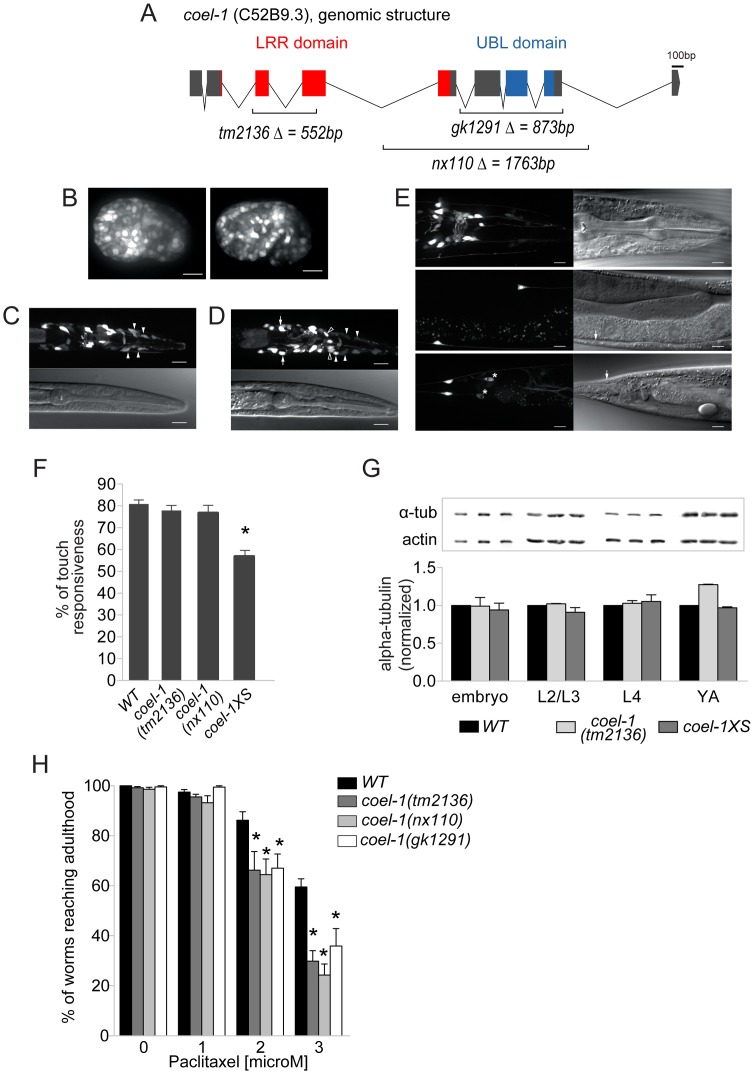Figure 3. coel-1 is expressed ubiquitously in embryos but largely confined to neurons in adults, and plays a role in microtubule stability and touch responsiveness.
A. Gene structure of coel-1 (C52B9.3) and nature of the mutant alleles used in this study (tm2136, gk1291 and nx110). B–E. Expression of coel-1 across C. elegans development. Transgenic expression of coel-1 transcriptional GFP reporter in (B) elongating embryos (left panel: early elongation; right panel: comma stage), (C,D) young larvae (white arrows indicate probable expression in the AIZ interneurons, closed arrowheads indicate probable sheath cells, open arrowheads indicate unidentified cells) and (E) head (top panels), body (middle panels) and tail regions (bottom panels) of a mature adult worm. In panel E, note anterior projections from the neurons located laterally along the body wall (ALM) that continue into the head. White arrows indicate cell bodies of probable PLM cells, asterisks show crosstalk into the GFP channel from sra-6::dsRED2 in the PVQ neurons. The absence of fluorescence from the nucleus suggests that this signal is in fact derived from the sra-6::dsRED2 transgene rather than coel-1-driven GFP reporter gene, which contains a nuclear localization signal. In all images, anterior is to the right and ventral is down except for B where anterior is left. Top panels in B and C and right ones in D are GFP images, bottom panels in B and C and left ones in D are DIC images. Scale bar represents 10 µm. F. Worms overexpressing coel-1 (coel-1XS) but not coel-1(tm2136) or coel-1(nx110) mutant worms have a decreased response to gentle body touch. (n≥30 worms/genotype) *p≤0.001 versus wild-type (WT = N2) (Student's t-test). G. Quantitative western blot analyses of total α-tubulin using an antibody directed against all α-tubulins in C. elegans. Developmental stages of worms are indicated. Actin represents a loading control. Comparative western blots of coel-1(tm2136) mutant worms and coel-1XS worms vs. wild-type were carried out, and representative blots for each tested stage are shown. Bars are normalized to WT intensity (n≥3). No statistically significant difference is observed (Student's t-test p>0.05). H. coel-1 mutant animals are hypersensitive to taxol, a microtubule-stabilizing anticancer agent. Approximately 100 eggs wild-type (N2), coel-1(tm2136), (nx110) or gk1291 were incubated at room temperature on plate containing the indicated paclitaxel concentration for 4 days, and worms able to develop to gravid adults were counted. Each genotype was tested in three separate trials; *, p≤0.05 Two-way ANOVA followed by Bonferroni post-test. Bars in all panels represent mean ± SEM.

